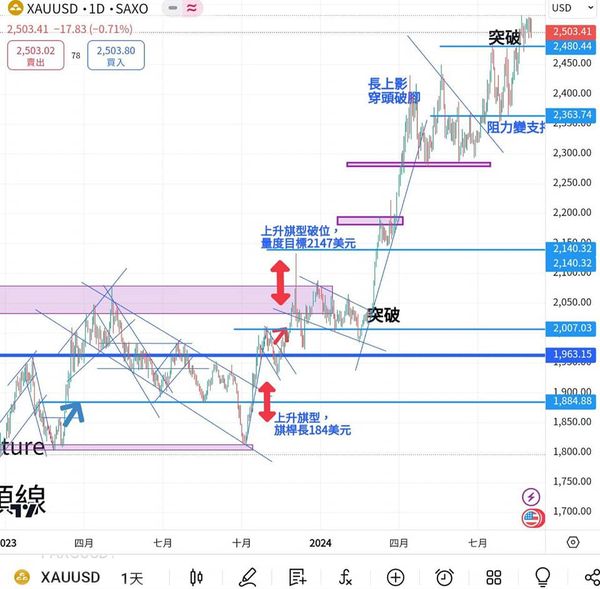Gold prices are high, waiting for non-agricultural data.
At the beginning of last week, gold stabilized and opened above 2512. The market has highly expected the US to start the interest rate reduction cycle in September. The decline of the US dollar supported the stabilization of gold, but the high price of gold was also insufficient.
Although officials of the Federal Reserve sent pigeons several times, the economic data did not show that there was an urgent need to cut interest rates by half a percentage point in September. After the market broke through the 2500 mark, investors' enthusiasm began to decline, and the upward trend slowed down. The market was most concerned about the performance of inflation data over the weekend. PCE inflation in the United States continued to slow down, with the core figure reported at 2.6%, indicating that the price level was under control. As pointed out by Federal Reserve Chairman Powell, the inflation risk decreased, while the labor market risk increased.
However, the slowdown in inflation did not stimulate the gold price to climb further. On the contrary, it was only after the gold price retreated below 2500 on Friday night that it stabilized. It can be seen that the market has begun to ignore inflation concerns and the focus will be on the performance of the labor market.
This week, Monday is the Labor Day holiday in the United States, and the market conditions will be relatively light. On Thursday and Friday, there are small non-agricultural and non-agricultural data, which are expected to improve compared with last month. However, if it worsens again, it will probably stimulate the possibility of reducing interest rates by half a percentage point in September, thus supporting the improvement of gold prices. The market situation is a bit different, so let's refer to each other.
Previous Article Next Article


 Whatsapp
Whatsapp Telegram
Telegram
